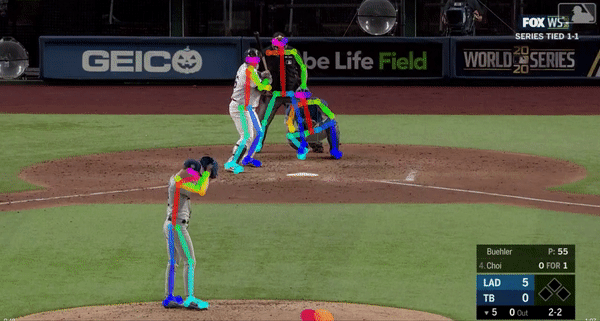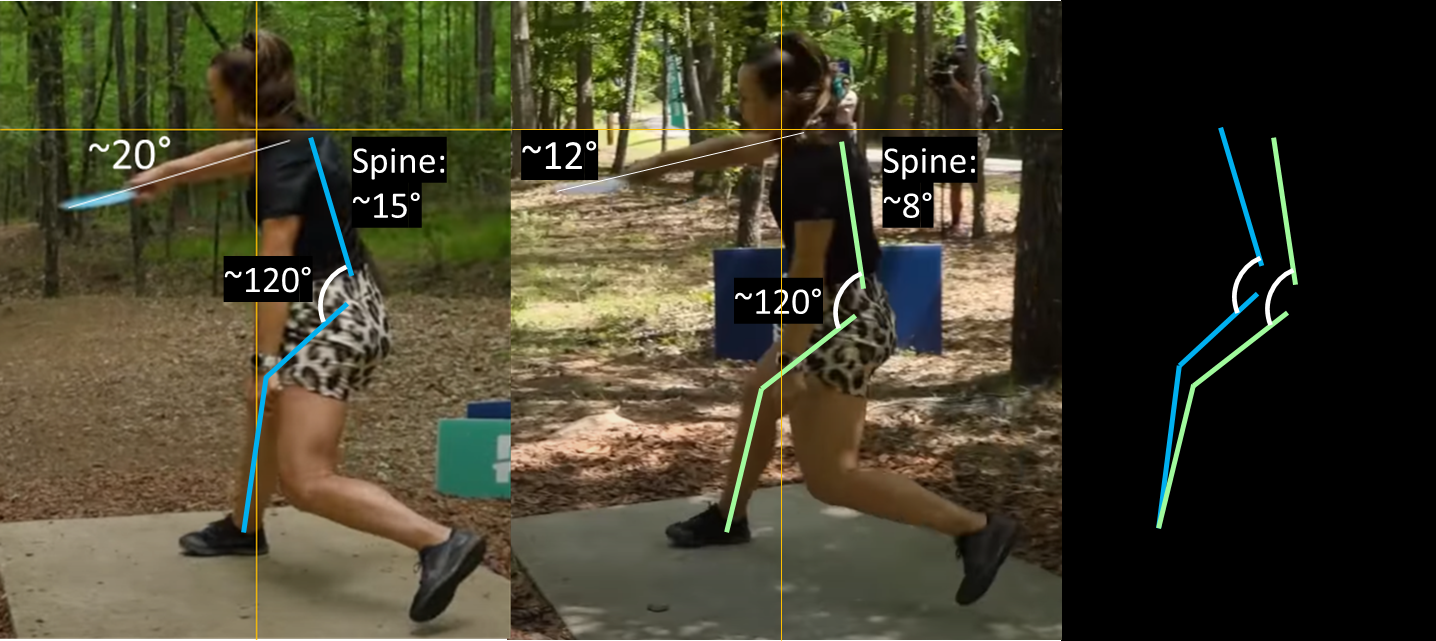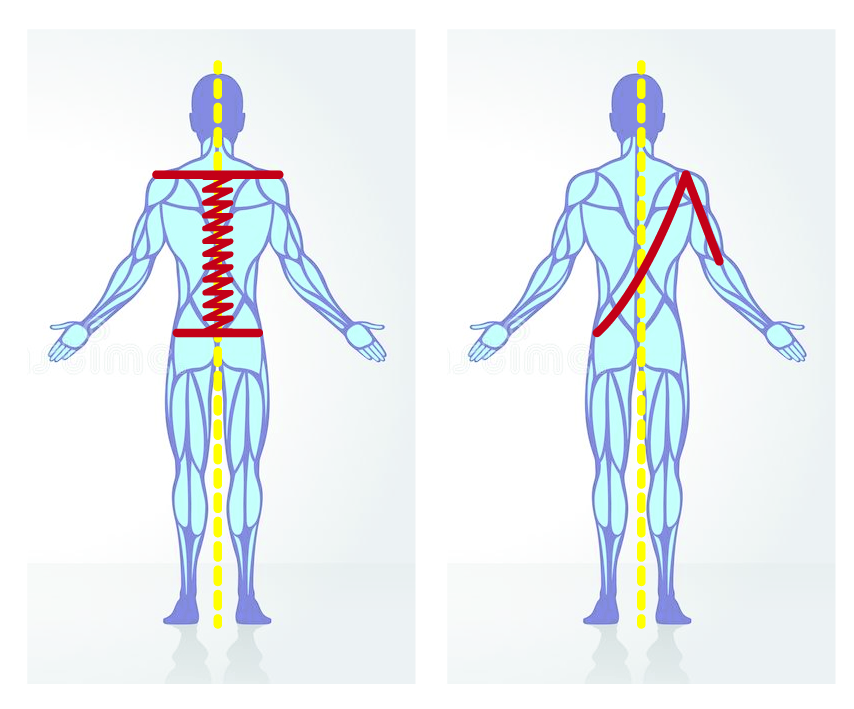Brychanus
* Ace Member *
Timothy, thanks for drawing this out, I really appreciate discussions like this.
Can you help me see the vertical part you're looking at? Not a criticism, just want to clarify because at this point I only see players move down the tee and swinging in the tilted axis.
You can't see inside my head but basically I see this when people move, but in true 4D (rather than a flattened video like these):

To take a 2D slice of what I "see" in 4D (with camera parallax, yada yada), Kristin is another case of preserved posture that adjusts overall to the task. I learned a couple bits here. Interestingly, her shot from hole 12 on the right is one of her more "flat" shots from the entire tournament. In real time, I expected her plane of play to be more shallow, but it's still ~12 degrees hyzer. You can see her spine is still ~8 degrees relative to the ground. Importantly, her femur-to-spine angulation is almost identical, but her whole axis is shifted to account for the more shallow release angle. She still uses a hyzer gravity advantage to power what are among her flattest swings.

Part of why that happens involves that little bit of supination entering the release, which segways into the next part you mentioned:
This was interesting to think about! I want to make sure I'm parsing it using an image. I guess part of this is what you mean by "outside" so I went with this to help the chat. The added blue lines are the foot angles and a guess about where the pelvis is. The red lines in B and C are representing changes in the arm and shoulders in your scenarios. Specifically:
(A) Could be your "If your arm is at 90, your hand is outside only at full reachback."
(B) Could be your "If at 135, never".
(C) Could be one version of your "unless you're flexible enough to reach back past square, or you do some shoulder rotation manipulation"

Are A-C what you mean, or something else?
Definitely want to continue this chat, just want to check my work above.
I said there were two things I noticed - straight arm and upright/vertical swing axis.
Can you help me see the vertical part you're looking at? Not a criticism, just want to clarify because at this point I only see players move down the tee and swinging in the tilted axis.
You can't see inside my head but basically I see this when people move, but in true 4D (rather than a flattened video like these):

To take a 2D slice of what I "see" in 4D (with camera parallax, yada yada), Kristin is another case of preserved posture that adjusts overall to the task. I learned a couple bits here. Interestingly, her shot from hole 12 on the right is one of her more "flat" shots from the entire tournament. In real time, I expected her plane of play to be more shallow, but it's still ~12 degrees hyzer. You can see her spine is still ~8 degrees relative to the ground. Importantly, her femur-to-spine angulation is almost identical, but her whole axis is shifted to account for the more shallow release angle. She still uses a hyzer gravity advantage to power what are among her flattest swings.

Part of why that happens involves that little bit of supination entering the release, which segways into the next part you mentioned:
A straight arm affects how long you can hold your hand on the outside of the disc.
If your arm is at 90, your hand is outside only at full reachback. If at 135, never (unless you're flexible enough to reach back past square, or you do some shoulder rotation manipulation).
This was interesting to think about! I want to make sure I'm parsing it using an image. I guess part of this is what you mean by "outside" so I went with this to help the chat. The added blue lines are the foot angles and a guess about where the pelvis is. The red lines in B and C are representing changes in the arm and shoulders in your scenarios. Specifically:
(A) Could be your "If your arm is at 90, your hand is outside only at full reachback."
(B) Could be your "If at 135, never".
(C) Could be one version of your "unless you're flexible enough to reach back past square, or you do some shoulder rotation manipulation"

Are A-C what you mean, or something else?
That implies that rotation 1 is continuous from start of forward swing for straight arm, but is delayed until power pocket for bent arm. I don't know the right terms so I'm calling rotation 1 disc motion while fully in the grip, and rotation 2 the disc motion as it comes out of the hand finger by finger.
It might be that straight arm throwers have to do more external rotation and supination later in the swing to get the disc on plane.
Most of the discussion here is on macro body mechanics, and that's still all I work on as a beginner, but I'm curious about the arm hand stuff too.
Definitely want to continue this chat, just want to check my work above.

